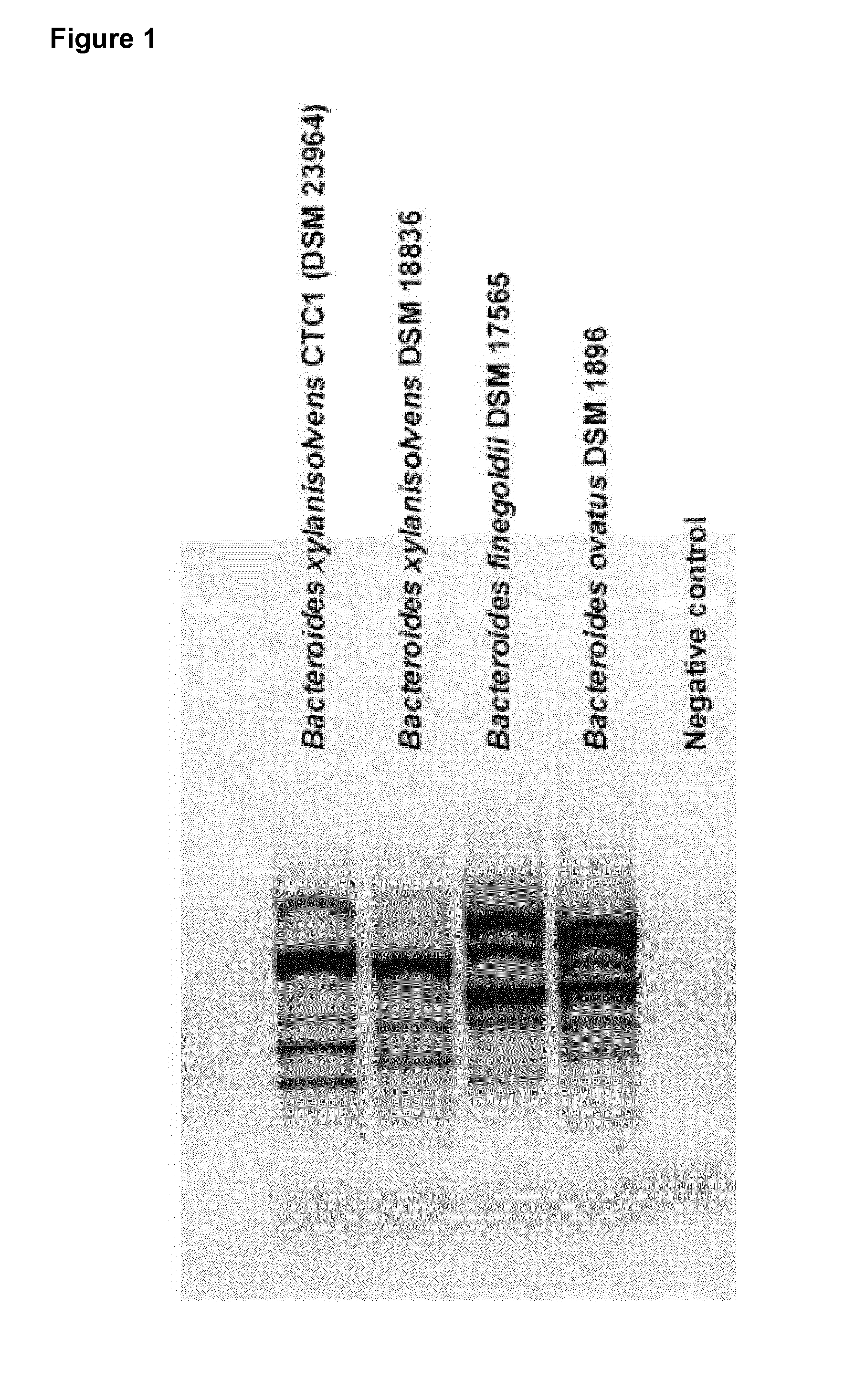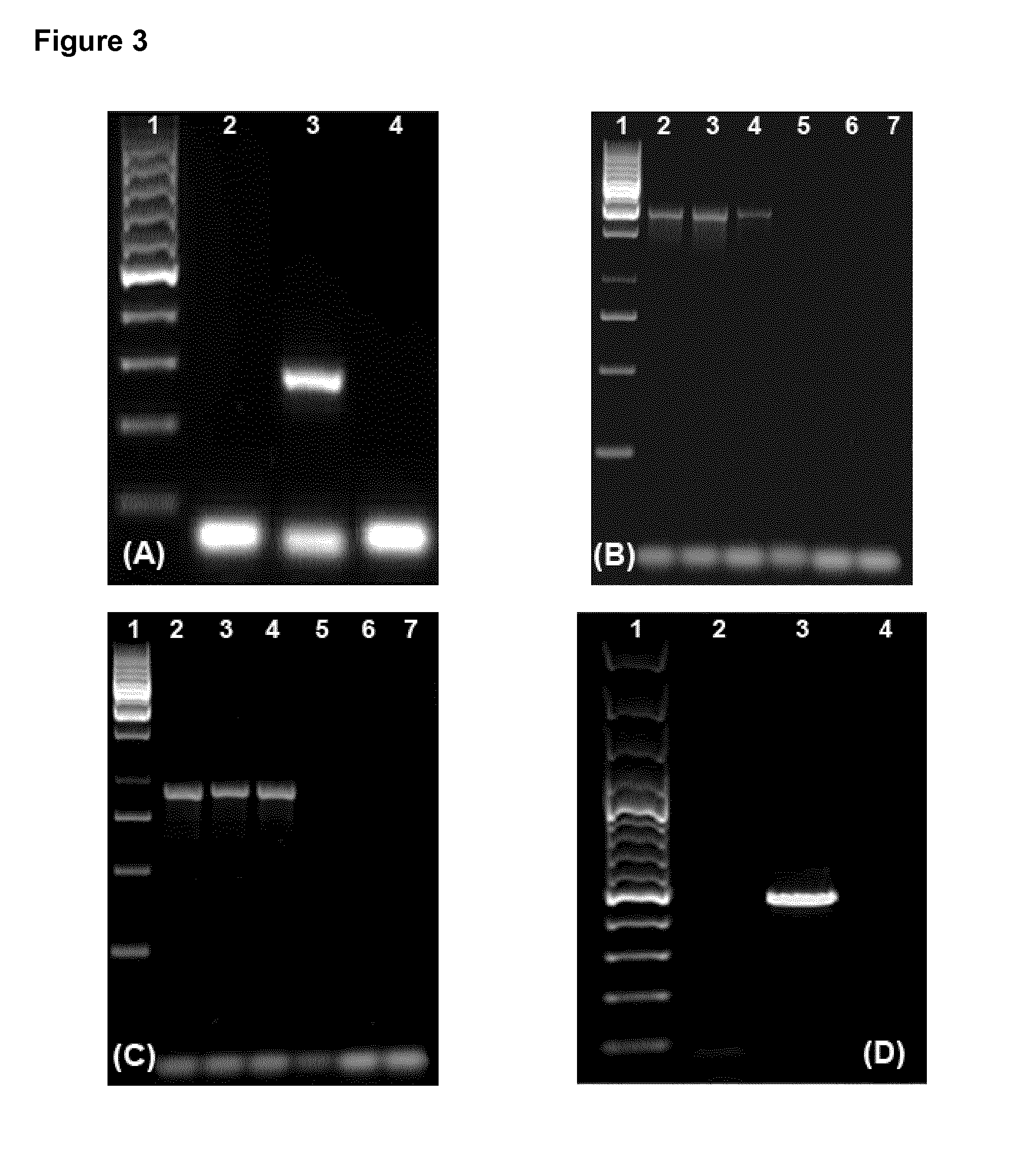Microorganisms of the species bacteroides xylanisolvens
a technology of bacteroides and microorganisms, which is applied in the field of food products comprising microorganisms, can solve the problems that its use in food products is not known or suggested, and achieve the effects of favorable short-chain fatty acids, low pathogenicity, and high safety for human consumption
- Summary
- Abstract
- Description
- Claims
- Application Information
AI Technical Summary
Benefits of technology
Problems solved by technology
Method used
Image
Examples
example 1
The Microorganism According to the Invention is a Distinct Strain of the Species Bacteroides xylanisolvens
[0101]1.1 Taxonomic Analysis 1: 16S rRNA Sequence Similarity
[0102]The 16S rRNA gene sequence (480 bases) of strain CTC1 were amplified by PCR using universal primers 27f (5′-AGAGTTTGATCMTGGCTCAG-3′ (SEQ ID NO: 1)) and 519r (5′-GWATTACCGCGGCKGCTG-3′ (SEQ ID NO: 2)). PCR products were purified by using the High Pure PCR Product Purification Kit (Roche, Indianapolis, USA) and the DNA concentration and product size estimated by using a Low DNA Mass Ladder (Invitrogen, Carlsbad, USA). PCR products were sequenced using a DYEnamic™ ET Dye Terminator Cycle Sequencing Kit (Amersham Bioscience) and ABI PRISM 3100 capillary sequencer (Applied Biosystems) according to the manufacturer's specifications. The identification of phylogenetic neighbors was initially carried out by the BLAST (Altschul et al., 1997) and megaBLAST (Zhang et al., 2000) programs against the database of type strains w...
example 2
Effect of Simulated Gastric Juice and Intestinal Juice
[0110]To simulate the passage through gastrointestinal tract, CTC1 bacteria were submitted to the action of simulated gastric and intestinal juices. The survivor rate for the CTC1 strain in gastric juice was above 90% after 180 min and above 96% after 240 min exposure to intestinal juice.
example 3
Analysis of Virulence Factors
3.1 Antibiotics Resistance of CTC1
[0111]The analysis of the minimum inhibitory concentration (MIC) of several antibiotics revealed that the Bacteroides xylanisolvens CTC1 strain was resistant to β-lactam drugs like penicillin G, ampicillin and meziocillin. However, it was sensitive to usual antibiotics agents like metronidazole, meropenem and clindamycin and the addition of β-lactamase inhibitor restored the sensitivity to β-lactam drugs.
3.2 Detection of Plasmids in CTC1
[0112]To investigate the potential presence of plasmids in the CTC1 strain, plasmid DNA material was isolated from CTC1 and from both control strains, E. coli DSM 3876, and E. coli DSM 6202, respectively, which contain the low copy plasmids RP4 (60 kb) and pSC101 (9.4 kb). Measurements of the plasmid DNA concentration at 260 nm revealed no presence of DNA in the plasmid preparation of CTC1. Running the plasmid preparations on an agarose gel confirmed the isolation of both low copy plasmid...
PUM
| Property | Measurement | Unit |
|---|---|---|
| diameter | aaaaa | aaaaa |
| length | aaaaa | aaaaa |
| temperature | aaaaa | aaaaa |
Abstract
Description
Claims
Application Information
 Login to View More
Login to View More - R&D
- Intellectual Property
- Life Sciences
- Materials
- Tech Scout
- Unparalleled Data Quality
- Higher Quality Content
- 60% Fewer Hallucinations
Browse by: Latest US Patents, China's latest patents, Technical Efficacy Thesaurus, Application Domain, Technology Topic, Popular Technical Reports.
© 2025 PatSnap. All rights reserved.Legal|Privacy policy|Modern Slavery Act Transparency Statement|Sitemap|About US| Contact US: help@patsnap.com



